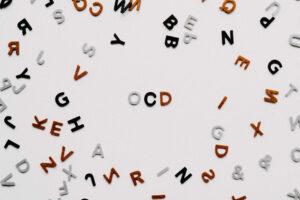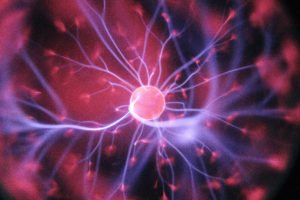
Eating Disorders and Anorexia Nervosa
Anorexia nervosa, often referred to simply as anorexia, is an eating disorder. It is characterized by low weight, food restriction, body image disturbance, fear of gaining weight, and an overpowering desire to be thin. The adjective “nervosa” indicates the functional and non-organic nature of the disorder. The symptom of hunger is frequently present. Also, the pathological control of this instinct is a source of satisfaction for the patients. This is about eating disorders and anorexia nervosa.
—
Patients with anorexia nervosa commonly see themselves as overweight, even if they are in fact underweight. The DSM-5 describes this perceptual symptom as a “disturbance in the way in which one’s body weight or shape is experienced.” In research and clinical settings, this symptom is called a “body image disturbance.” Patients with anorexia nervosa also often deny that they have a problem with low weight. They may weigh themselves frequently, consume small amounts, and only eat certain foods.
—
Some exercise excessively, force themselves to vomit (in the “anorexia purging” subtype), or use laxatives to lose weight and control body shapes. Medical complications may include osteoporosis, infertility, and heart damage, among others. Women will often stop having menstrual periods. In extreme cases, patients with anorexia nervosa who continually refuse significant dietary intake and weight restoration interventions will be force fed. If they are declared incompetent to make decisions by a psychiatrist, may be fed by force under restraint via nasogastric tube. This is after asking their parents or proxies to make the decision for them.
—
The cause of anorexia is currently unknown. There appear to be some genetic components with identical twins more often affected than fraternal twins. Cultural factors also appear to play a role, with societies that value thinness having higher rates of the disease. Additionally, it occurs more commonly among those involved in activities that value thinness, such as high-level athletics, modeling, and dancing. There is evidence for biological, psychological, developmental, and sociocultural risk factors, but the exact cause of eating disorders is unknown.
—
Anorexia often begins following a major life-change or stress-inducing event. The diagnosis requires a significantly low weight and the severity of disease is based on body mass index (BMI). This is measured in adults with mild disease having a BMI of greater than 17. The more severe include a moderate BMI of 16 to 17, severe a BMI of 15 to 16, and extreme a BMI less than 15. In children, a BMI for age percentile of less than the 5th percentile is often used. In recent years, evolutionary psychiatry — as an emerging scientific discipline — has been studying mental disorders from an evolutionary perspective. It is still debated whether eating disorders such as anorexia have evolutionary functions. If they don’t, then if they are problems resulting from a modern lifestyle
—
Anorexia nervosa is an eating disorder characterized by attempts to lose weight to the point of starvation. A person with anorexia nervosa may exhibit a number of signs and symptoms. The type and severity of these symptoms may vary and be present but not readily apparent. Anorexia nervosa, and the associated malnutrition that results from self-imposed starvation, can cause complications. This can occur in every major organ system in the body. Hypokalaemia, a drop in the level of potassium in the blood, is a sign of anorexia nervosa. A significant drop in potassium can cause abnormal heart rhythms, constipation, fatigue, muscle damage, and paralysis.
—
Globally, anorexia is estimated to affect 2.9 million people as of 2015. It is estimated to occur in 0.9% to 4.3% of women and 0.2% to 0.3% of men in Western countries at some point in their life. About 0.4% of young women are affected in a given year. It is estimated to occur ten times more commonly among women than men. Rates in most of the developing world are unclear. Often it begins during the teen years or young adulthood.
—
While anorexia became more commonly diagnosed during the 20th century, it’s specifics are vague. It is unclear if this was due to an increase in its frequency or simply better diagnosis. In 2013, it directly resulted in about 600 deaths globally, up from 400 deaths in 1990. Eating disorders also increase a person’s risk of death from a wide range of other causes, including suicide. About 5% of people with anorexia die from complications over a ten-year period, a nearly six times increased risk. The term “anorexia nervosa” was first used in 1873 by William Gull to describe this condition.
—
Signs and symptoms may be classified in physical, cognitive, affective, behavioral and perceptual:
Physical Symptoms
- A low body mass index for one’s age and height
- Amenorrhea, a symptom that occurs after prolonged weight loss, causing menstruation to stop
- Dry hair and skin, as well as hair thinning
- Fear of even the slightest weight gain; taking all precautionary measures to avoid weight gain or becoming “overweight”
- Rapid, continuous weight loss
- Lanugo: soft, fine hair growing over the face and body
- Bradycardia or tachycardia.
- Chronic fatigue
- Orange discoloration of the skin, particularly the feet (Carotenosis)
- Infertility
- Halitosis (from vomiting or starvation-induced ketosis)
- Hypotension or orthostatic hypotension
- Having severe muscle tension, aches and pains
- Insomnia
- Abdominal distension
Cognitive Symptoms
- An obsession with counting calories and monitoring fat contents of food.
- Preoccupation with food, recipes, or cooking; may cook elaborate dinners for others, but not eat the food themselves or consume a very small portion.
- Admiration of thinner people.
- Thoughts of being fat or not enough thin
- An altered mental representation of one’s body
- Difficulty in abstract thinking and problem solving
- Rigid and inflexible thinking
- Poor self-esteem
- Hypercriticism and clinical perfectionism
—
Affective Symptoms
- Depression
- Ashamed of oneself or one’s body
- Anxiety disorders
- Rapid mood swings
- Emotional dysregulation
- Alexitimia
Eating Disorders and Anorexia Nervosa
Behavioral Symptoms
- Food restrictions despite being underweight or at a healthy weight.
- Food rituals, such as cutting food into tiny pieces, refusing to eat around others, and hiding or discarding of food.
- Purging (only in the anorexia purging subtype) with laxatives, diet pills, ipecac syrup, or water pills to flush food out of their system after eating or engage in self-induced vomiting.
- Excessive exercise, including micro-exercising, for example making small persistent movements of fingers or toes.
- Self harming or self-loathing. Solitude: may avoid friends and family and become more withdrawn and secretive.
Perceptual Symptoms
- Perception of self as overweight, in contradiction to an underweight reality (namely “body image disturbance”)
- Intolerance to cold and frequent complaints of being cold; body temperature may lower (hypothermia) in an effort to conserve energy due to malnutrition.
- Altered body schema (i.e. an implicit representation of the body evoked by acting)
- Altered interoception
Interoception
Interoception involves the conscious and unconscious sense of the internal state of the body. It has an important role in homeostasis and regulation of emotions. Aside from noticeable physiological dysfunction, interoceptive deficits also prompt individuals with anorexia to concentrate on distorted perceptions. This consists of multiple elements of their body image. This exists in both people with anorexia and in healthy individuals due to impairment in interoceptive sensitivity and interoceptive awareness.
—
Aside from weight gain and outer appearance, people with anorexia also report abnormal bodily functions. This can includes things such as indistinct feelings of fullness. This provides an example of miscommunication between internal signals of the body and the brain. Due to impaired interoceptive sensitivity, powerful cues of fullness may be detected prematurely in highly sensitive individuals. This can result in decreased calorie consumption and generate anxiety surrounding food intake in anorexia patients. People with anorexia also report difficulty identifying and describing their emotional feelings. They also have an inability to distinguish emotions from bodily sensations in general, called alexithymia.
—
Interoceptive awareness and emotion are deeply intertwined, and could mutually impact each other in abnormalities. Anorexia patients also exhibit emotional regulation difficulties that ignite emotionally-cued eating behaviors. This can include restricting food or excessive exercising. Impaired interoceptive sensitivity and interoceptive awareness can lead anorexia patients to adapt distorted interpretations of weight gain. All of which are cued by physical sensations related to digestion (e.g., fullness).
—
Combined, these interoceptive and emotional elements could together trigger maladaptive and negatively reinforced behavioral responses. These reactions assist in the maintenance of anorexia. In addition to metacognition, people with anorexia also have difficulty with social cognition including interpreting others’ emotions, and demonstrating empathy. Abnormal interoceptive awareness and interoceptive sensitivity shown through all of these examples have been observed so frequently in anorexia that they have become key characteristics of the illness.
Final Thoughts: Eating Disorders and Anorexia Nervosa
Anorexia nervosa is a serious mental illness that should be taken very seriously. If you know of anyone, including yourself, who may be dealing with this, please seek the proper medical and psychological guidance to set yourself free.





Recent Comments